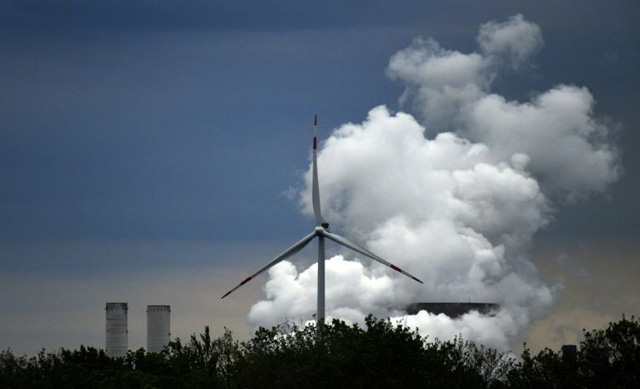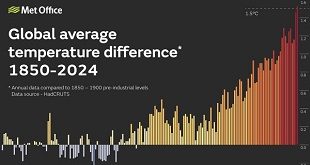
Paris, France | AFP | The vital transition to a zero-carbon economy is likely to be a long and rocky road. So-called green energy is booming, but not fast enough to curb climate change, which is accelerating at an alarming pace as oil, gas and coal consumption soar.
– Booming renewables –
Solar, wind, biomass, geothermal, hydro: over the past decade, global production capacity of renewable energies has increased fourfold.
Aside from dams of more than 50 megawatts, renewables capacity has reached 1,650 gigawatts, compared with 410 GW in 2009, according to a survey by the Frankfurt School of Management and Bloomberg New Energy Finance (BNEF) ahead of the UN Climate Summit on September 23.
The main reason is the spectacular increase in their cost competitiveness — since 2009, the price of energy generated by solar panels has plummeted by 81 percent and that of electricity generated by terrestrial wind farms has plunged by 46 percent.
With 640 GW, solar now has the greatest capacity — compared with a total of 2,300 GW for all energies (green and fossil fuel) combined — exceeding both coal and gas. It could meet the needs of 80 percent of US households.
– Leading the way –
China, the world’s biggest carbon emitter, is also the number one investor in renewables, ploughing nearly $760 billion into the sector over the past 10 years. By comparison, the US has invested $356 billion and Europe $698 billion.
In 2018, 29 countries each invested $1 billion in the sector, compared to 21 countries two years earlier.
“In an increasing number of countries either wind or solar are the cheapest form of electricity generation,” said BNEF’s Angus McCrone, noting that natural gas remains competitively priced in the US and coal in India.
“Some countries have a split personality on this: they want to retain the market for the fossil fuels that they derive income from, on the other hand they don’t want to be left behind in the technological race and do nothing on renewables,” he said.
– 4% of the world’s energy –
The room for improvement is certainly huge.
In 2018, renewables were the source of 12.9 percent of the world’s electricity, according to the BNEF/Frankfurt report, which estimated that this led to two billion fewer tonnes of CO2 equivalents being emitted into the atmosphere last year.
But this year, fossil-related emissions increased by 1.7 percent to a record 33 billion tonnes, including 13 billion tonnes for the electricity sector, as demand for energy continues to grow.
According to the International Energy Agency (IEA), dams represent 2.5 percent of the world’s primary energy. Other sources including wind, solar, biofuels and recovery of waste account for 1.8 percent collectively.
Compared with non-carbon energies — renewables and nuclear — fossil fuels still account for more than 80 percent of the total.
“This shows that the transition of the energy sector is on its way — it’s still not rapid enough for the world to meet both climate and development goals,” said the UN Environment Programme’s Francoise d’Estais, presenting the BNEF report.
She pointed to a serious problem that is slowing the growth of green energy: subsidies for fossil fuels are still double those for renewables.
– Greening transport and politics –
Experts are calling on governments to take real action and come up with a long-term vision — such as the goal of becoming carbon-neutral by 2050 as pledged by France and Britain — and strong measures, such as building renovation, clean energy for heating and transport.
“Electricity is the easiest part” to de-carbonise as governments already closely regulate the sector, said Jim Williams, an energy expert at the University of San Francisco.
“On the other hand, things like cars and buildings and industries… those are individuals, companies… and that’s a whole other matter,” he added.
As for subsidies for fossil fuels, 40 countries promised to reform them in 2015 as part of the Paris climate accord.
But by 2017, around 100 countries were still offering $300 billion in subsidies, an increase of 11 percent over the previous year, according to the experts of the REN21 Renewables Now network.
 The Independent Uganda: You get the Truth we Pay the Price
The Independent Uganda: You get the Truth we Pay the Price


